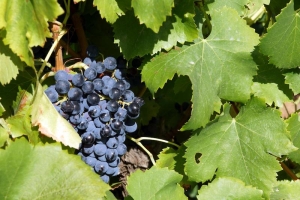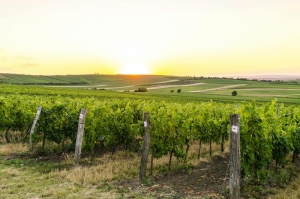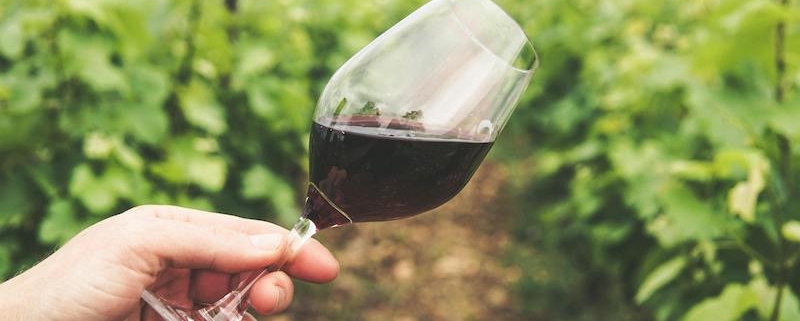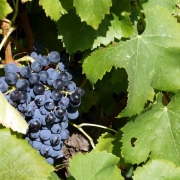International Cabernet Sauvignon Day: The King of Red Wines
Every year wine lovers around the world celebrate International Cabernet Sauvignon Day, a day to honor one of the most popular grapes in the world. On the 30th of August, both seasoned wine drinkers and casual sippers are encouraged to taste the big, bold flavours of Cabernet Sauvignon, aka the King of Red Wines.

How Cabernet Sauvignon was Discovered: An Accident
The story of how Cabernet Sauvignon was discovered is an accident. In the 17th century in the vineyards of Bordeaux, France, a natural crossing occurred between two well known grapes: Cabernet Franc, a red grape and Sauvignon Blanc, a white grape. This accident created a new grape variety—Cabernet Sauvignon.
The details of this cross-pollination were a mystery for centuries until modern DNA testing in the 1990s proved the parentage of Cabernet Sauvignon. This explained the grape’s unique characteristics, the structure and tannins of Cabernet Franc and the crisp, aromatic qualities of Sauvignon Blanc.
This accidental cross-pollination created a grape that would become a foundation of Bordeaux winemaking and eventually a global force. Winemakers quickly saw the potential of Cabernet Sauvignon, not just for its big flavors and deep color but for its ability to thrive in many climates and produce high quality wines.
The Origins and Early History of Cabernet Sauvignon
After its discovery Cabernet Sauvignon started to take root in the Médoc region of Bordeaux where it loved the gravelly soils that drained well and reflected the sun onto the vines. The thick skins made it resistant to disease and rot, a major plus in Bordeaux’s capricious climate.
By the 18th century Cabernet Sauvignon was a mainstay of Bordeaux blends, especially on the Left Bank where it was often blended with Merlot and Cabernet Franc to make the region’s famous wines. These blends were prized for their balance, complexity and ability to age, the benchmark for red wines everywhere.

Cabernet Sauvignon’s Global Travels
Cabernet Sauvignon’s success in Bordeaux didn’t go unnoticed and soon it was being grown in other parts of Europe and beyond. In the 19th century it made its way to the New World where it found a happy home in California’s Napa Valley. The warm sunny climate of Napa allowed Cabernet Sauvignon to ripen fully, producing wines with intense fruit flavors and robust tannins that are the hallmark of the region.
In Australia Cabernet Sauvignon was introduced in the mid 19th century and quickly became a leading grape variety, especially in regions like Coonawarra and Margaret River. Australian Cabernet Sauvignons are known for their individuality, often with eucalyptus or mint notes and rich dark fruit flavors. They have international recognition for their unique character and quality.
Cabernet Sauvignon also found success in South America, especially in Chile and Argentina where the grape loves the high altitude vineyards of the Andes. Chilean Cabernet Sauvignons are praised for their balance and structure, often more restrained than their New World counterparts.
Cabernet Sauvignon Characteristics
Cabernet Sauvignon is big, bold, deep and tannic, one of the most powerful and long lived red wines. The thick skins give it its intense color and tannic structure that allows it to age for decades in the bottle.
Flavor-wise Cabernet Sauvignon is often described as blackcurrant, blackberry and plum with secondary notes of tobacco, cedar, mint, eucalyptus and even graphite. Oak aging can add vanilla, spice and chocolate to the wine’s complexity.
One of the reasons Cabernet Sauvignon is so popular is its versatility. It can be enjoyed young with its big fruit and firm tannins or aged for many years to develop more complexity and a smoother texture.

The Future of Cabernet Sauvignon
As the world of wine moves forward Cabernet Sauvignon stays at the top, always offering something new and interesting. Winemakers are trying organic and biodynamic farming, low intervention winemaking and new regions to grow the grape. These innovations will keep Cabernet Sauvignon in the hearts of wine lovers everywhere.
In Australia sustainable vineyard practices and exploring new terroirs will keep Australian Cabernet Sauvignon in the game. Regions like Coonawarra with its terra rossa soils and Margaret River with its maritime climate are producing wines that show the individuality of Australian Cabernet.
Conclusion
International Cabernet Sauvignon Day is to celebrate this great varietal! Whether you’re opening a special bottle or trying a new favourite, today is the day to pour a drop of Cab Sav and enjoy!









Leave a Reply
Want to join the discussion?Feel free to contribute!